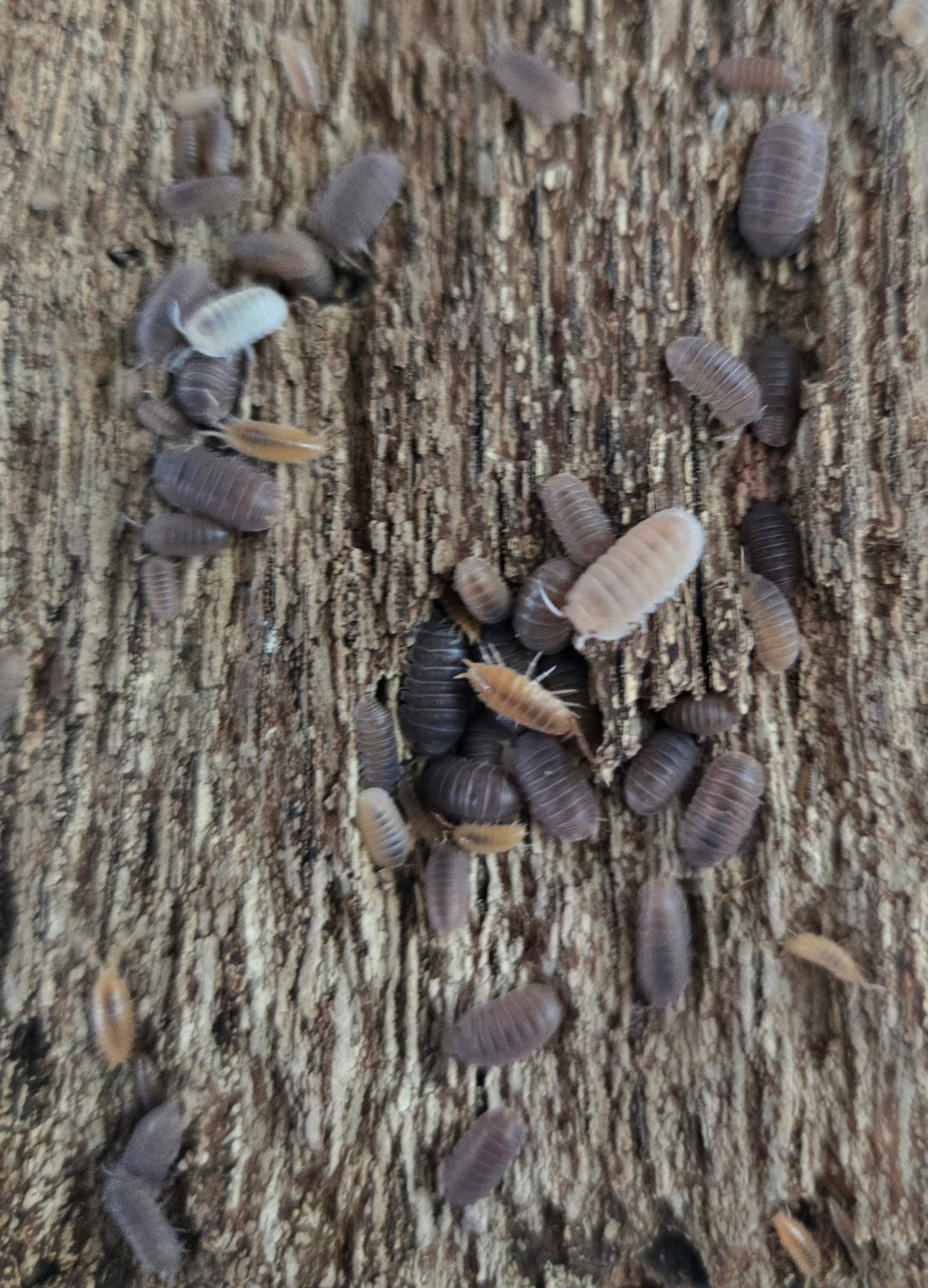A very common question we are asked is: Is it safe to mix different species of isopods in an enclosure. The short answer is yes! It is okay to mix different species of isopods in a bioactive enclosure, and it's encouraged for biodiversity. In nature, several species of isopods cohabitate in the same area, and the same holds true for springtails.
It's very common to see social media posts where someone will say that different isopods species shouldn't be mixed in the same enclosure as one species will overtake the other species or one will outcompete the others for resources. This is not the case in most instances when common isopods are cohabitated together, and they are cared for properly. The isopods will not harm each other and species cannot interbreed. If the enclosure that the isopods are in is neglected, of course, there is a good chance of one species eventually being the lone survivor. We have bioactive vivariums that were originally built in 2010, and the different isopods and springtails thrive together. Of course, the vivariums have been given a refresh every few years as needed, but the variety of microfauna is still present.
Here are some helpful tips to make sure your isopods and springtails live in harmony in your enclosure. Provide a lot of leaf litter. We are talking a layer of leaves, not one small handful of leaves used for the entire enclosure. Provide decaying organic plant matter such as wood rot or bark, and add a source of calcium such as finely crushed eggshells or a small piece of cuttlebone. Adding some natural hides such as botanical seed pods or cholla wood. And lastly, when the population of your isopod colonies get larger, consider adding some supplemental foods such as a small piece of vegetable or dried protein such as dried fish or fish food flakes.
It's also important to make sure the species of isopods you are cohabitating have the same environmental requirements. If you attempt to keep an arid isopod with a humid isopod in a humid enclosure, the arid isopod is not going to thrive. Most common species such as P. scaber, P. pruinosus, P. laevis, A. vulgare, C. murina, Dwarf White, et cetera, can be cohabitated together as long as there is a damp area in the enclosure for them to retreat to, and also keep in mind that some species do not thrive in semi-arid environments so those would not be recommended to be housed together for that reason, not because the other isopods would cause harm to them.



